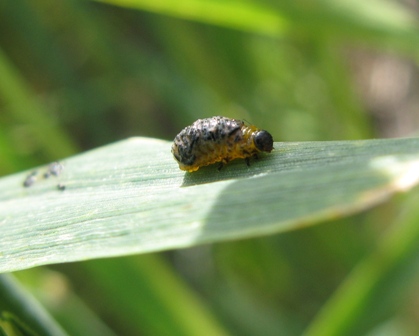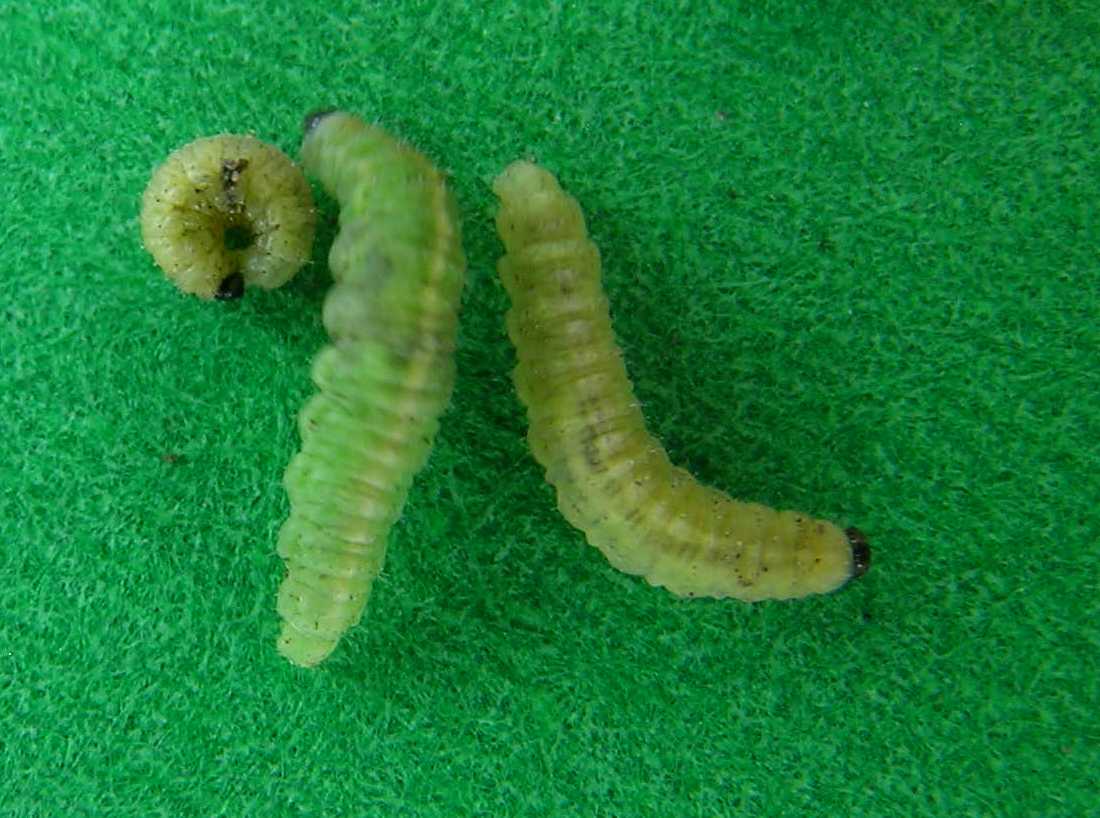Manitoba Insect & Disease Update
Issue 5: June 21, 2017
Summary
Insects: Alfalfa weevil has been reported at high levels in fields in the Interlake, Southwest, and Northwest. There are some lingering cutworm issues in the northwest, although populations of cutworm in many locations are turning to pupae.
Pathology: Stripe rust has been detected in more locations around Manitoba. The disease is known to have overwintered in Manitoba near Austin. Reports have come in of detections of stripe rust in winter wheat near Neepawa and near Winkler. Levels have been low overall and are not a major concern at this time. There is a researcher in Lethbridge who is interested in obtaining stripe rust isolates from Manitoba, so if you do detect stripe rust in your field please contact Holly Derksen for information on how to send the samples to Alberta for research purposes.
Got Cereal Leaf Beetles? Donate Some to Science
Low levels of cereal leaf beetle have also been found in some fields. A parasitic wasp called Tetrastichus julis, which is specific to cereal leaf beetle, has been released in Manitoba in the past few years. It seems to be establishing well, and hopefully will keep populations at sub-economic levels. We are hoping to once again collect cereal leaf beetle larvae and determine the percent of larvae that are parasitized from fields in various regions. So if you are noticing any cereal leaf beetle larvae on wheat, oats, barley, or any other cereal crop, please collect a sample or let me know so we can collect some and determine the level of parasitism in the population. Areas that may have low levels of parasitism would be considered for possible future releases of the parasitoid. Ideally a sample of at least 25 larvae is good for estimating percent parasitism, but larger samples (50 to 100 larvae) are even better. They can be collected off the plant or in a sweep net. Place some food for them in the container as well.
Contact John Gavloski (see information at the bottom of the update) to have someone collect a sample from your field. We do not have records of cereal leaf beetle east of Carman, so if noticed in more eastern areas of the province, please let us know so we can verify can collect a sample.


Figure 1. Larva of cereal leaf beetle. Figure 2. Feeding from cereal leaf beetle.
Note that although larvae of cereal leaf beetle are yellow with a brown head, they may look like drops of oil on the leaf, because they have a fecal coat.
Managing Alfalfa Weevil
Alfalfa weevil levels have been quite high in many fields. Alfalfa weevil larvae do not have legs, so can not move too far. So for hay crops an early cutting, when they are still larvae, results in many starving or desiccating, especially if we get some hot sunny weather after the cut. Keep an eye on the regrowth. Usually the cutting kills a lot of the larvae, but if the regrowth happens quickly some may survive and feed on it.
In seed crops management can be difficult. Insecticides are registered but often are not highly effective on alfalfa weevil.

Figure 3. Larvae of alfalfa weevil.
Insect Monitoring Programs
Bertha Armyworm: Cumulative counts from traps for bertha armyworm are currently quite low. Highest counts so far are:
Table 1. Highest cumulative trap counts for bertha armyworm adults over the trapping period June 4 to June 21, 2017.
| Location | Region | Count |
|---|---|---|
| Emerson | Central | 15 |
| Lenore | Southwest | 12 |
| Swan Valley | Northwest | 12 |
Diamondback Moth: Diamondback moth monitoring with the pheromone baited traps has been underway since the beginning of May. Very low levels of moths were caught in traps in May and early-June. The highest cumulative trap count on June 6 was 19. Some higher levels of moths were caught in traps the following weeks, however. By June 20th 10 traps had cumulative counts greater than 50, and the highest cumulative count was 161. Highest counts have been in the Northwest and Interlake, and the lowest counts in the Southwest. Table 1 below summarizes the highest cumulative counts in Manitoba.
Table 2. Highest cumulative trap counts for diamondback moth adults over the trapping period May 1 to June 20, 2017.
| Location | Count |
|---|---|
| Minitonas | 161 |
| Teulon | 102 |
| The Pas | 93 |
| St. Adolphe | 83 |
| Whitemouth | 70 |
| The Pas | 69 |
The levels are not out of the norm of what we usually see, and how large populations of larvae get depends on several factors including weather, and some key natural enemies, some of which also move into Manitoba on winds from the south. For example, Diadegma insulare, a parasitoid that lays eggs into diamondback moth larvae, is not known to overwinter in Canada, and is believed to migrate northwards along with diamondback moth.
Larvae of diamondback moth are at noticeable (although not economical) levels in some fields in Manitoba, and some pupae have been observed as well.
A more detailed update of diamondback moth counts in Manitoba is available in the Manitoba Agriculture website at: http://www.gov.mb.ca/agriculture/crops/insects/diamondback-moth-forecast.html
----------------------------------------------------------------------------------------------------------------------
Compiled by:
John Gavloski, Entomologist Holly Derksen, Field Crop Pathologist
Manitoba Agriculture Manitoba Agriculture
Phone: (204) 750-0594 Phone: (204) 750-4248
To report observations on insects or plant pathogens that may be of interest or importance to farmers and agronomists in Manitoba, please send messages to the above contacts.
To be placed on an E-mail list so you will be notified immediately when new Manitoba Insect and Disease Updates are posted, please contact John Gavloski at the address or numbers listed above.
